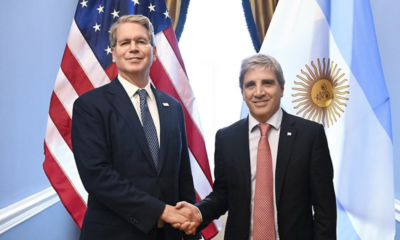INTERNACIONAL
Maniobras distractivas, secretos, engaños y una espera en su club de golf: cómo planeó Donald Trump la operación «Martillo de Medianoche» para atacar a Irán
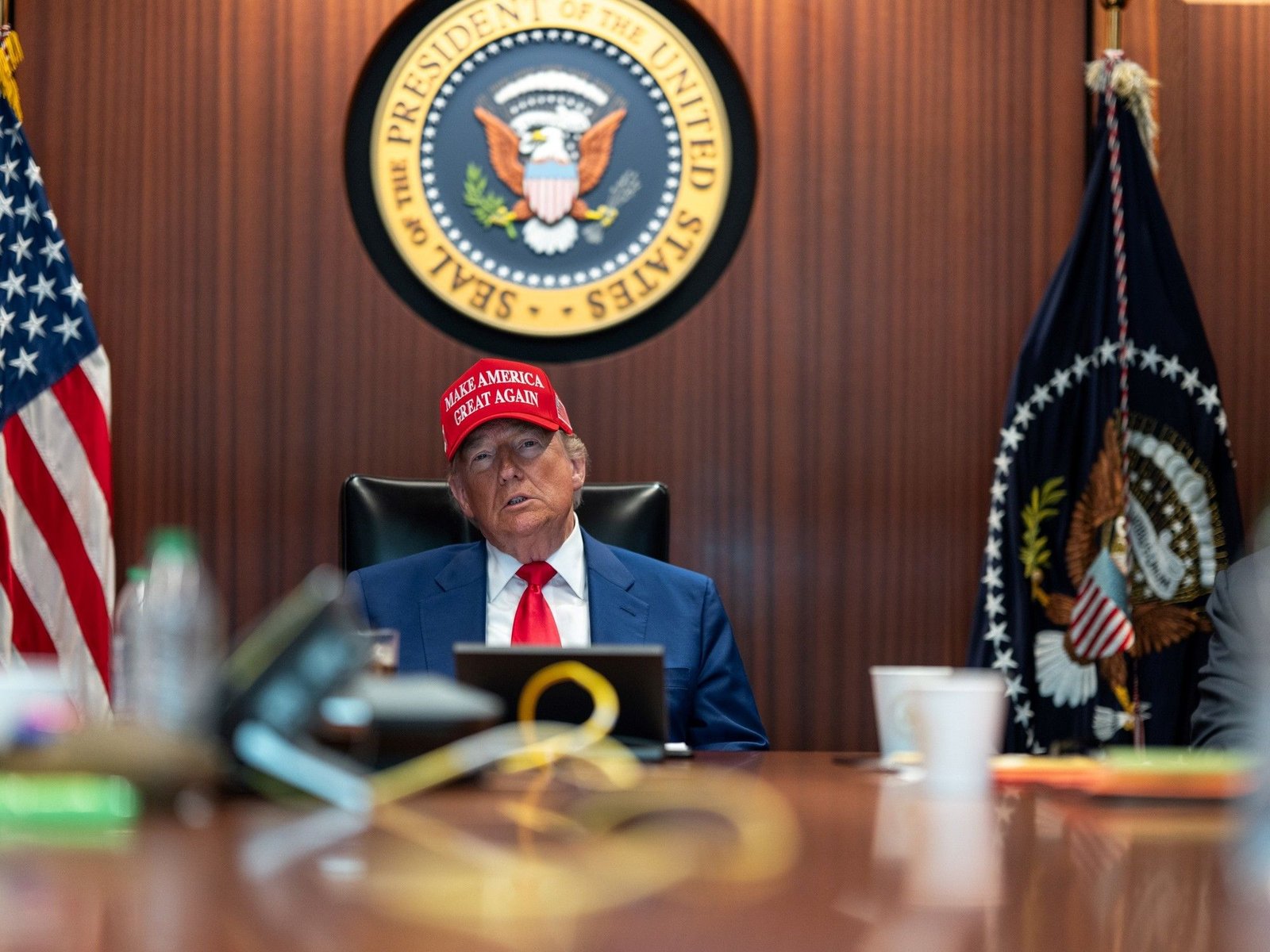
INTERNACIONAL
Top 5 moments from final New York City mayoral debate: ‘Knock him on his tuchas’
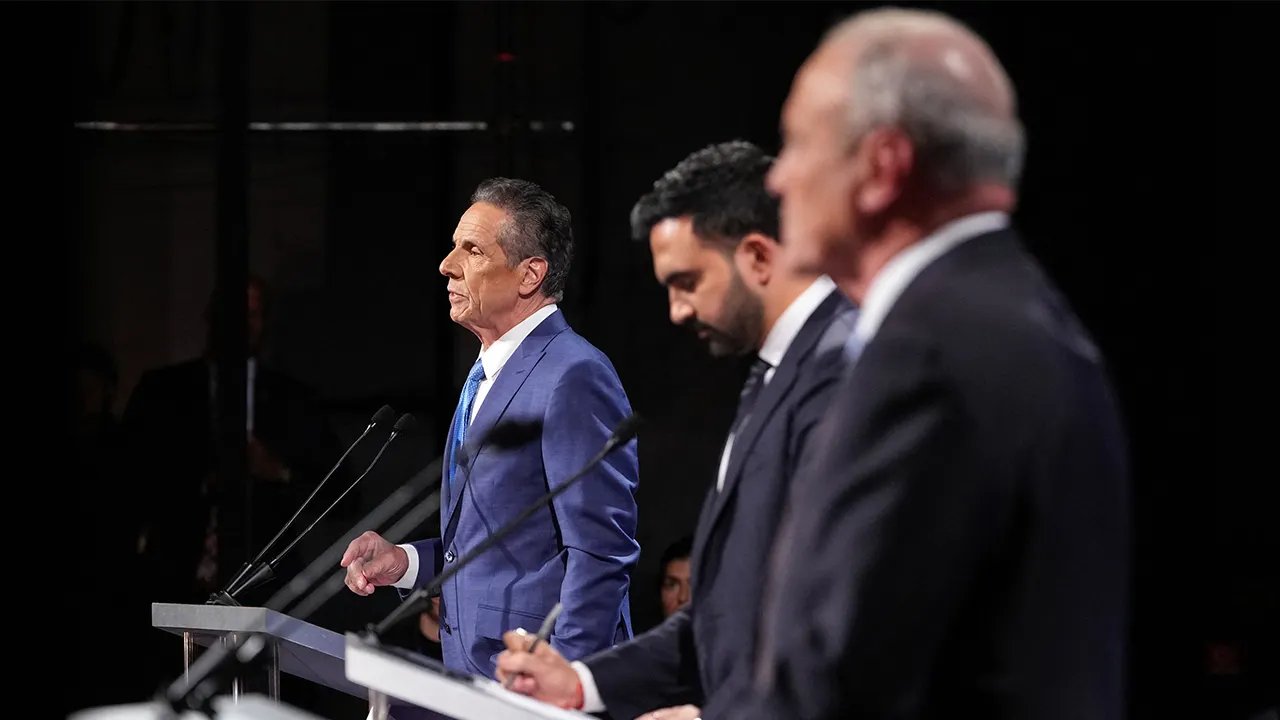
NEWYou can now listen to Fox News articles!
Candidates came out swinging at New York City’s final mayoral debate Wednesday night, with all three candidates launching personal attacks and spotlighting each other’s hottest controversies.
With just weeks until the election, socialist candidate Zohran Mamdani is highly favored to win. Despite this, the debate on Wednesday was every man for himself, with each candidate lobbing attacks and insults at one another.
Here are the top five moments from Wednesday night’s debate.
1. ‘Knock him on his tuchas’
Independent candidate Andrew Cuomo, who led the state as a Democratic governor from 2011 until he resigned amid controversy in 2021, took aim at Mamdani’s lack of leadership experience, predicting that President Donald Trump would make short work of him if he were elected mayor.
«[Trump] has said he’ll take over New York if he wins, and he will, because he has no respect for him. He thinks he’s a kid and he’s going to knock him on his tuchas,» said Cuomo.
‘TIME FOR A CHANGE’: OUTSIDE 30 ROCK, NEW YORKERS TRADE CHANTS AND ARGUMENTS DURING TENSE MAYORAL SHOWDOWN
Former Gov. Andrew Cuomo, Democratic candidate Zohran Mamdani and Republican candidate Curtis Sliwa participate in the second New York City mayoral debate at LaGuardia Community College in Long Island City, Queens, New York City, on Oct. 22, 2025. (Hiroko Masuike/POOL/AFP via Getty Images)
Mamdani immediately shot back by calling Cuomo «Donald Trump’s puppet himself.»
«You could turn on the TV any day of the week, and you will hear Donald Trump share that his pick for Mayor is Andrew Cuomo, and he wants Andrew Cuomo to be the mayor, not because it will be good for New Yorkers, but because it will be good for him,» said Mamdani.
2. ‘You fled!’
Though far and away the dark horse candidate in the race, Republican Curtis Sliwa landed some of the hardest punches of the night. Early on in the debate, he fired at Cuomo’s controversial exit from office, saying, «Andrew, you didn’t leave. You fled from being impeached by the Democrats in the state legislature. You fled!»
Cuomo, meanwhile, reserved most of his ire for Mamdani. At another point in the debate, he addressed the 34-year-old socialist New York assembly member, saying, «You don’t know how to run a government, you don’t know how to handle an emergency, and you’ve literally never proposed the bill on anything that you’re not talking about in your campaign.»
«You had the worst attendance record in the assembly, and you gave yourself the highest raise in the United States of America,» he said, exclaiming, «Shame on you! Shame on you!»
MAMDANI RIPPED BY RIVALS FOR UNPOPULAR STANCE DURING FIERY NYC DEBATE: ‘YOU WON’T SUPPORT ISRAEL’
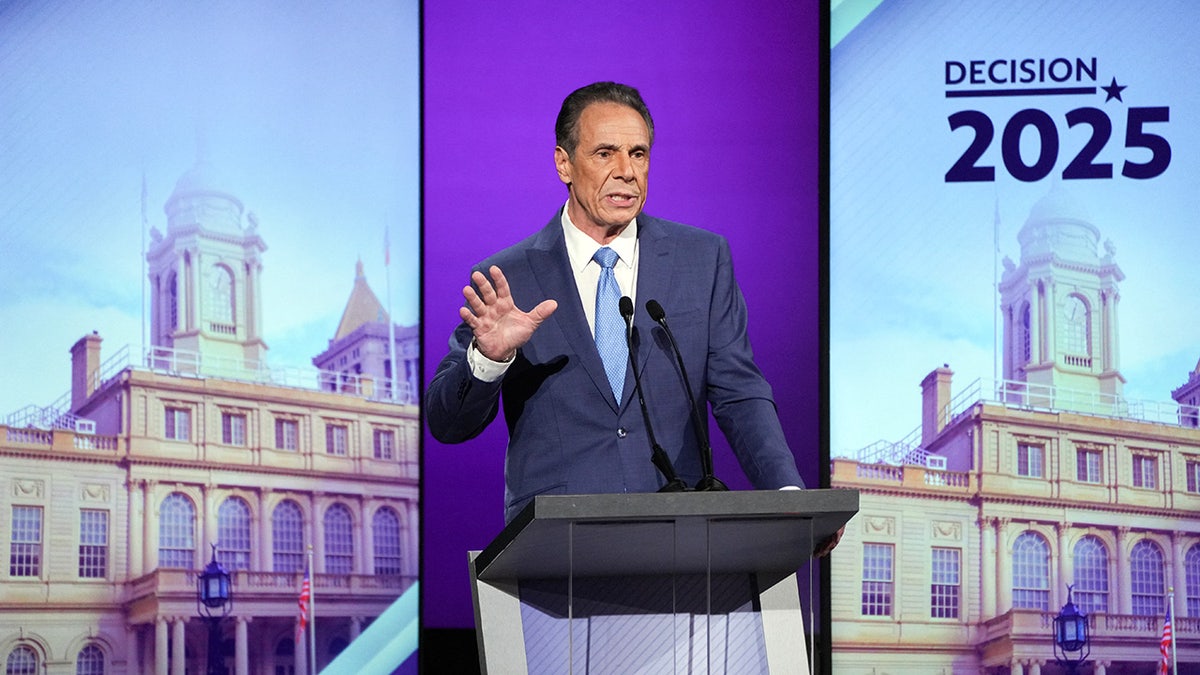
Independent candidate and former New York Governor Andrew Cuomo participates in the second New York City mayoral debate with Democratic candidate Zohran Mamdani and Republican candidate Curtis Sliwa at LaGuardia Performing Arts Center at LaGuardia Community College in Long Island City, Queens, New York, on October 22, 2025. (HIROKO MASUIKE/POOL/AFP via Getty Images)
In response, a grinning Mamdani said, «It is always a pleasure to hear Andrew Cuomo create his own facts at every debate stage.»
«We just had a former governor say in his own words that the city has been getting screwed by the state. Who was leading the state? It was you!» said Mamdani. «You were leading the state for ten years, screwing the city!»
Cuomo immediately denied this accusation, blaming the current Democratic Gov. Kathy Hochul and saying, «That’s the past four years.»
3. The meme moment
Chaos erupted on the debate stage after Mamdani attempted to skirt around a question on whether he supports a set of housing ballot initiatives, with Cuomo, Sliwa and the moderators immediately pressing him to answer.
«What is your opinion, Zohran? Come on!» Sliwa shouted as Cuomo droned, «Yes or no?!»
Cuomo rocked back and forth with his hands, mocking Mamdani, saying, «It’s a TikTok dance,» producing the most meme-worthy moment of the night.
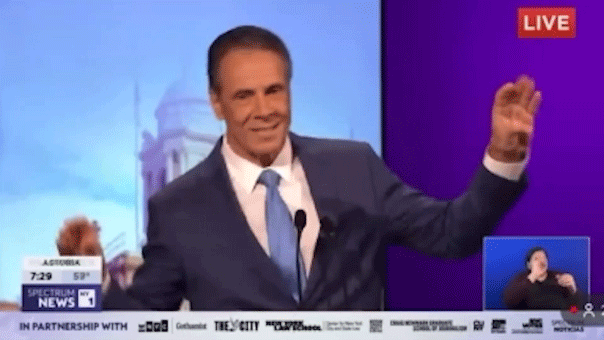
Andrew Cuomo taunts Zohran Mamdani with a dance during the last New York City mayoral debate on Oct. 22, 2025. (Spectrum News NY1)
«They’re pointing out what I was about to say. Would you please answer the question?» a moderator asked.
Mamdani continued to deflect, saying, «I think on this stage you can see two people appealing for the Republican Party votes and myself speaking directly to New York City.»
«Answer the question for once,» Cuomo continued prodding as Sliwa waved his arms and smacked his forehead with his palm.
«My question to you was, do you support the three ballot amendment questions?» the moderator pressed.
Mamdani finally answered, «I have not yet taken a position on those ballot initiatives,» as both Cuomo and Sliwa moaned in protest.
«What a shocker!» Cuomo teased. «Don’t worry, once he takes it, he’ll change it anyway.»
TOP 5 MOMENTS FROM FIERY NYC MAYORAL DEBATE: ‘HE LITERALLY HAS NEVER HAD A JOB’
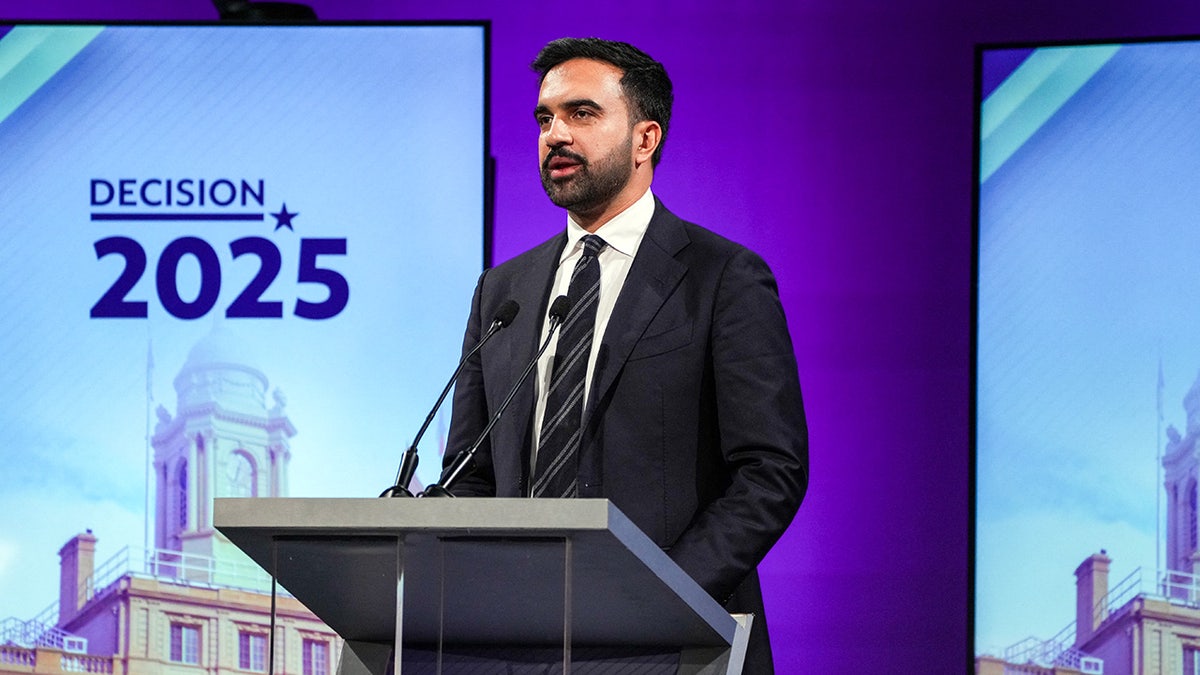
Democratic candidate Zohran Mamdani participates in the second New York City mayoral debate with Independent candidate and former New York Governor Andrew Cuomo and Republican candidate Curtis Sliwa at LaGuardia Performing Arts Center at LaGuardia Community College in Long Island City, Queens, New York, on October 22, 2025. (HIROKO MASUIKE/POOL/AFP via Getty Images)
4. Support for global jihad?
Moderators and candidates alike pressed Mamdani on his controversial positions on Israel and rising fears amongst New York’s Jewish community.
Citing two sons who he said were raised Jewish, Sliwa said, «This issue is personal for me.»
«Let me speak on behalf of my two sons when they’ve heard some of the statements you’ve made, like in support of global jihad, and I hear some people out there saying, ‘the Jews that time is due,’ which means the same thing. They’re frightened; they’re scared. They view you as the arsonist who fanned the flames of antisemitism,» said Sliwa.
«You’ve got a lot of explaining to do, a lot of apologizing to do,» Sliwa went on. «My sons are afraid. Their family, their friends, many in the Jewish community are concerned if you become mayor, because they don’t think when antisemitism rears its ugly head, which it’s now doing more than ever before, that you will have the ability to come in and put out those flames of hate.»
Mamdani shot back, «I think there is room for disagreement on many positions and many policies, but I also want to correct the record: I have never, not once, spoken in support of global jihad.»
«That is not something that I have said, and that continues to be ascribed to me. And frankly, I think much of it has to do with the fact that I am the first Muslim candidate to be on the precipice of winning this election,» Mamdani went on, adding, «All the same, Curtis, I do still want to be the mayor that will keep your sons safe, that will keep every single New Yorker safe.»
TRADING BARBS FROM LIGHT-HEARTED TO VICIOUS, MAYORAL CANDIDATES MAKE FINAL APPEAL TO NEW YORKERS
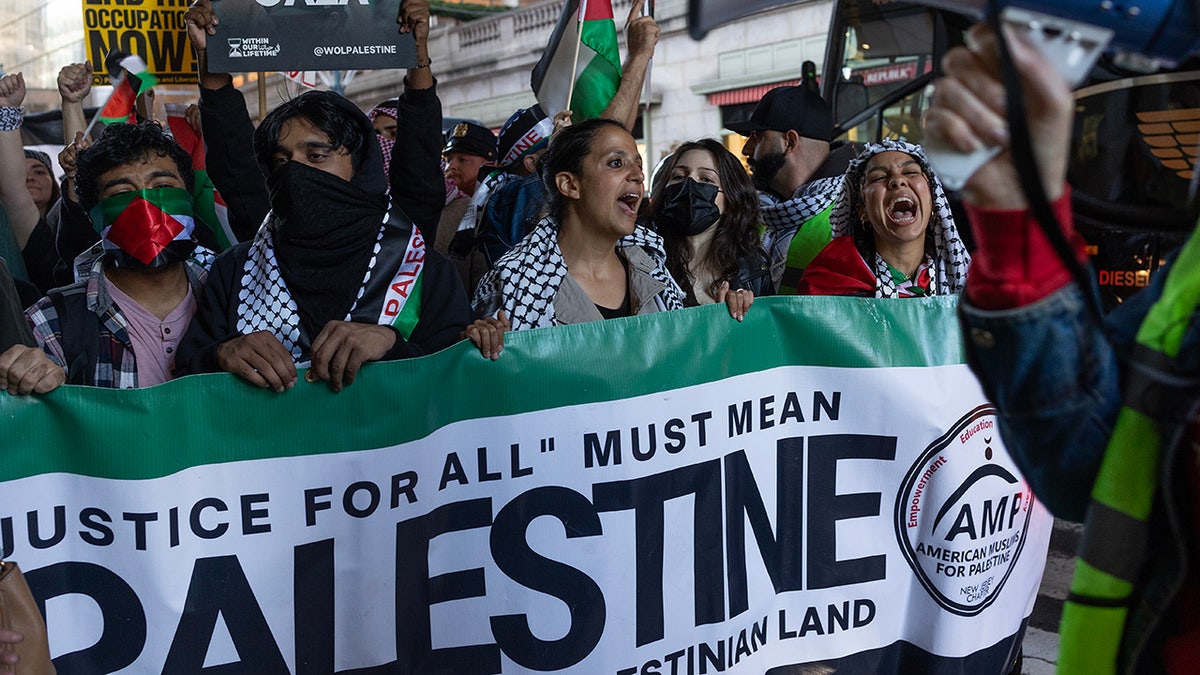
Thousands of demonstrators hold a pro-Palestinian rally and march in protest of Israel on October 13, 2023, in Times Square, New York City, New York. (Andrew Lichtenstein/Corbis via Getty Images)
5. A stage full of scandal
Sparks flew when Cuomo and Mamdani were given free rein to question each other and, unsurprisingly, chose to press each other on their most controversial scandals.
Cuomo knocked Mamdani, who is an immigrant to the U.S. from Uganda, for being a «toxic» force in New York City, and pressed him for not advocating for boycott, divestment and sanctions (BDS) against Uganda for its laws against homosexuality.
«You take a picture with Rebecca Kadaga, deputy prime minister of Uganda … She’s known as Rebecca ‘gay-killer’ Kadaga,» said Cuomo, asking, «How do you not renounce your citizenship, or demand BDS against Uganda for imprisoning people who are gay just by their sexual orientation, is that not a basic violation against human rights?»
Mamdani answered that «had I known that the first deputy minister was the architect of that legislation, I would not have taken that photo.»
In turn, Mamdani grilled Cuomo on 13 sexual harassment allegations filed against him while he was governor. Cuomo brushed this aside, saying, «The cases were dropped» and pressing further, «You have no problem with BDS against Israel, but no BDS against Uganda.»
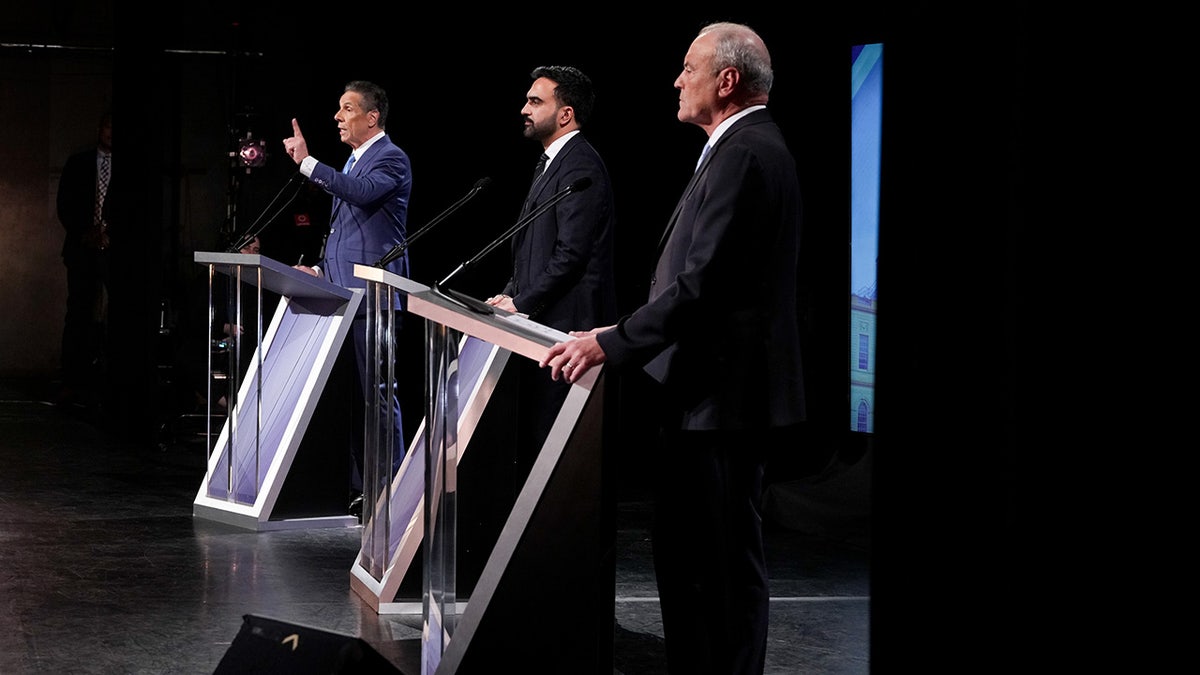
Andrew Cuomo, New York City mayoral candidate, from left, Zohran Mamdani, New York City mayoral candidate, and Curtis Sliwa, New York City mayoral candidate, during a mayoral debate in New York, US, on Wednesday, Oct. 22, 2025. Millions of dollars are pouring into the mayoral election with less than two weeks to go until New Yorkers go to the polls. (Hiroko Masuike/The New York Times/Bloomberg via Getty Images)
At another point in the debate, Mamdani attempted to turn the question of experience on Cuomo, saying, «The issue is that we have all experienced your experience.»
CLICK HERE TO DOWNLOAD THE FOX NEWS APP
«The issue is that we experienced you taking a $5 million book deal while you sent seniors to their deaths in nursing homes. The issue is that we experienced you cutting funding for the MTA to send money to upstate ski resorts. The issue is that we saw you give $959 million in tax breaks to Elon Musk. The issue is your experience,» said Mamdani.
«The issue is you have no experience,» insisted Cuomo, adding, «You’ve accomplished nothing.»
new york city,2025 2026 elections coverage,zohran mamdani,andrew cuomo,curtis sliwa,anti semitism,socialism
INTERNACIONAL
Brasil subastó cinco nuevos bloques petroleros en el Atlántico, a pocos días de la cumbre climática COP30
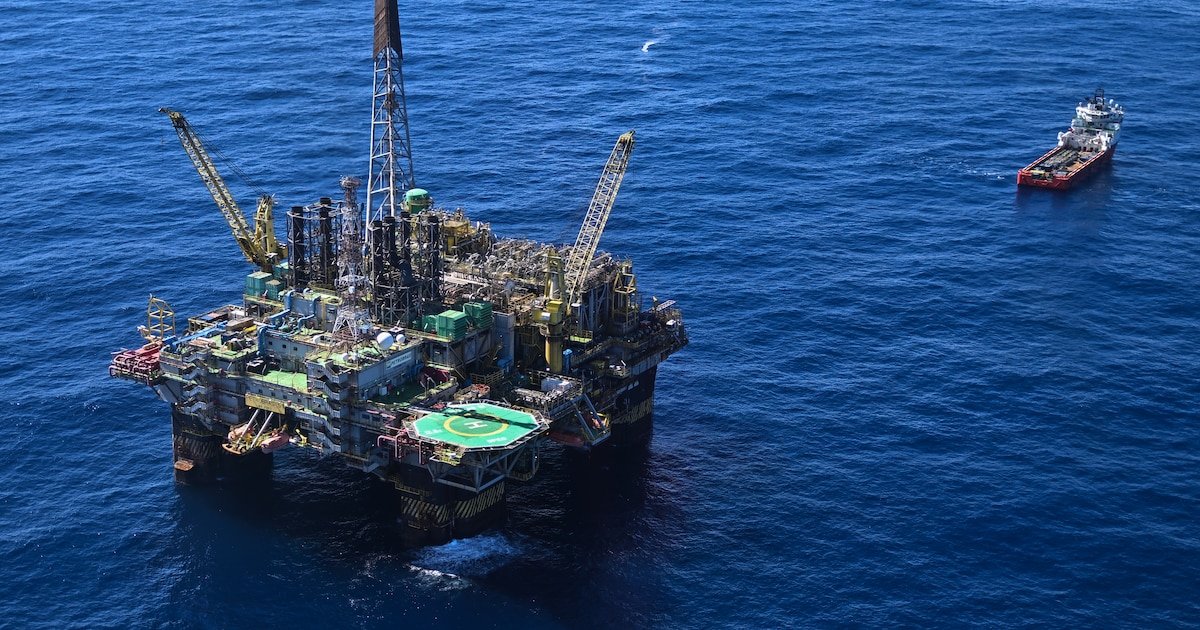
El gobierno de Brasil otorgó este miércoles los derechos de exploración de cinco bloques petroleros situados en aguas profundas del Atlántico, apenas dos días después de que la estatal Petrobras obtuviera licencia ambiental para iniciar perforaciones exploratorias marítimas cerca de la desembocadura del río Amazonas. La decisión reafirma el compromiso brasileño con la producción petrolera, una postura que genera controversia a menos de un mes de la conferencia climática COP30 de la ONU en la ciudad amazónica de Belém.
Las subastas, organizadas por la Agencia Nacional del Petróleo (ANP), se llevaron a cabo en Río de Janeiro y sumaron un total de 103,7 millones de reales (alrededor de 19,2 millones de dólares). De los siete bloques ofertados, cinco fueron adjudicados a grandes consorcios internacionales y nacionales, entre ellos la multinacional noruega Equinor y la china Cnooc. Estas áreas se localizan en el denominado presal, una reserva petrolera ubicada bajo una gruesa capa de sal en aguas ultraprofundas, donde se estima la existencia de yacimientos de alto potencial económico.
De las siete zonas ofrecidas en la subasta, las áreas de Jaspe, Citrino e Itaimbezinho fueron obtenidas respectivamente por un consorcio integrado por Petrobras (60%) y Equinor (40%), por Petrobras de forma individual, y por Equinor también de manera individual. Todas ellas se encuentran en la cuenca de Campos, frente al litoral del estado de Río de Janeiro.
En la cuenca de Santos, frente a las costas de San Pablo, la australiana Karoon se adjudicó el bloque de Esmeralda, mientras que un consorcio liderado por CNOOC (70%) y Sinopec (30%) obtuvo el área de Amatista. El resto de los bloques ofertados no atrajo el interés de las 15 empresas habilitadas para participar.
A diferencia de anteriores licitaciones, en esta ocasión no se otorgaron concesiones plenas, sino que las empresas ganadoras operarán en asociación con el Estado brasileño, que mantiene la propiedad de los derechos de exploración y producción. Para resultar seleccionadas, las compañías debieron ofrecer el mayor porcentaje de participación estatal en el excedente de producción de petróleo y gas.

La subasta formaba parte de una oferta inicial de 13 áreas, aunque las compañías solo mostraron interés por siete. De acuerdo con Artur Watt, director general de la ANP, “el mantenimiento de las actividades de exploración y producción es completamente compatible con la transición energética”. Watt defendió que este proceso debe acelerarse ajustando la demanda, sin restringir voluntariamente el suministro nacional, dado que “sería rápidamente cubierto por otros países en detrimento de los intereses nacionales”.
El lunes, Petrobras recibió la licencia ambiental del Instituto Brasileño del Medio Ambiente y de los Recursos Naturales Renovables (Ibama) para perforar un pozo exploratorio en el bloque FZA-M-059, situado a 175 kilómetros de la costa del estado de Amapá, próximo a la frontera con Surinam. La estatal inició los trabajos el mismo día de la autorización, según informó en un comunicado. Este pozo no producirá petróleo durante la fase exploratoria y las tareas podrían extenderse hasta cinco meses.
El ministro de Energía, Alexandre Silveira, celebró la decisión y subrayó en sus redes sociales que “el Margen Ecuatorial representa el futuro de nuestra soberanía energética. Brasil no puede renunciar a conocer su potencial”. Silveira insistió en que la perforación se realizará bajo “los más altos estándares internacionales” y con “responsabilidad ambiental”.
No obstante, la explotación petrolera en la región ha suscitado críticas de organizaciones ambientalistas y comunidades indígenas, dadas la vulnerabilidad y “extrema sensibilidad” del ecosistema amazónico. La polémica aumenta en vísperas de la COP30, donde uno de los ejes clave de debate será la reducción gradual del uso de combustibles fósiles.
La Margen Ecuatorial, que se extiende desde la frontera con Surinam hasta el noreste del país, es señalada por analistas geológicos y la industria como una de las zonas más prometedoras de Brasil por sus similitudes con los descubrimientos de hidrocarburos realizados en Guyana. Durante la última década, la región ha sido objeto de exploración por parte de importantes compañías internacionales, como Chevron, ExxonMobil, Petrobras y la Corporación Nacional de Petróleo de China.
El gobierno de Lula da Silva argumenta que el crecimiento del sector es clave para financiar la transición energética y el desarrollo económico. En junio, el Ejecutivo subastó otros 19 bloques en alta mar, algunos en cercanías del Amazonas, reafirmando su determinación de expandir la actividad petrolera en el país pese a las restricciones impuestas por las demandas ambientales.
La exploración en aguas profundas bajo la capa de sal, así como en la denominada Margen Ecuatorial, plantea desafíos técnicos y ambientales, en especial por las fuertes corrientes oceánicas y la proximidad a zonas de alta biodiversidad. Petrobras señaló que el pozo exploratorio en el bloque FZA-M-059 forma parte de su estrategia para incrementar reservas y conocer el potencial petrolero brasileño, aunque aún no está previsto su desarrollo comercial inmediato.
(Con información de AFP, AP y EFE)
cuenca de campos,empresas,empresas petroleras brasileñas,exterior,petrobras,petrolíferas,plantas,plataforma p-51,plataformas de petróleo,semi-públicas
INTERNACIONAL
Trump to host roundtable on efforts to thwart cartels, human trafficking operations
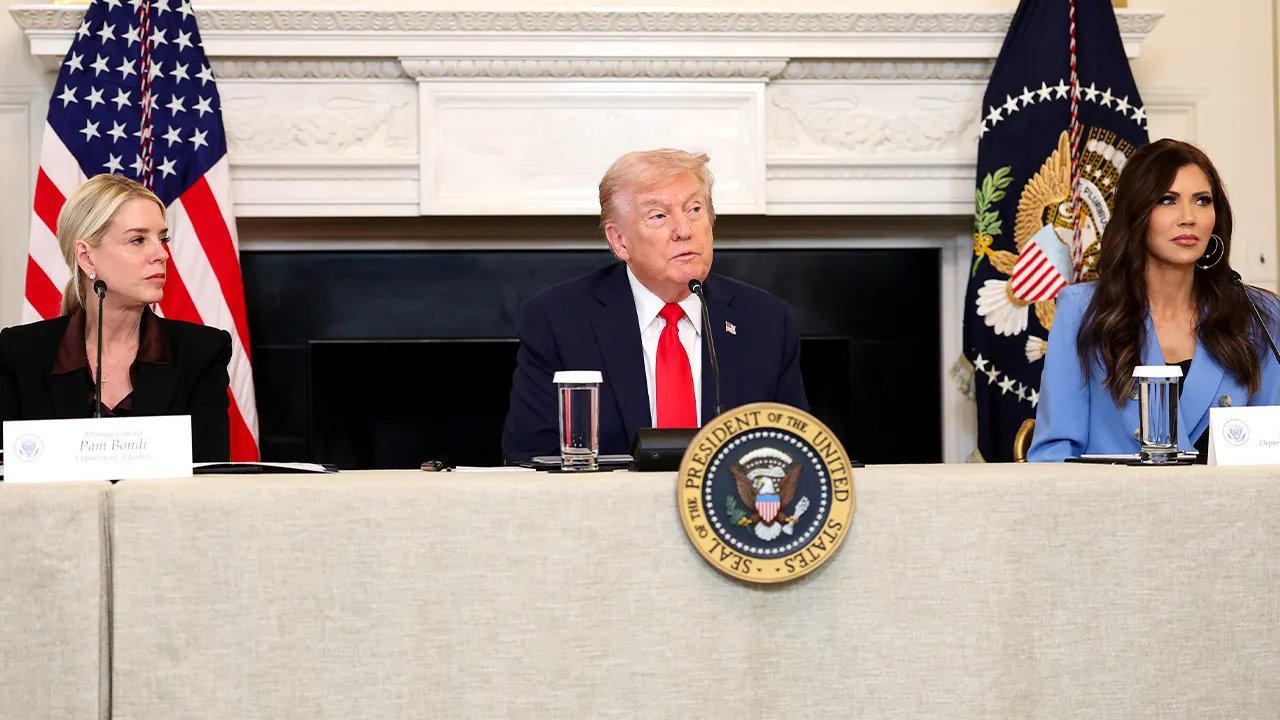
Mexican leaders want US help against cartels
Mexican Senator Lilly Téllez joins ‘Fox & Friends Weekend’ to discuss growing tensions between President Trump and Venezuelan leader Nicolás Maduro as the U.S. boosts its military presence in the region to target drug boats and cartels.
NEWYou can now listen to Fox News articles!
FIRST ON FOX: President Donald Trump will host a roundtable at the White House Thursday afternoon with law enforcement and administration officials to discuss the successes of the Homeland Security Task Forces, which the president established on his first day in office to snuff out threats from criminal cartels in the U.S.
«The President’s Homeland Security Task Forces are a landmark achievement that highlight what the federal government can achieve with a leader like President Trump who is willing to slash red tape, increase coordination and put the safety of the American people first,» White House spokeswoman Abigail Jackson told Fox News Digital of the event.
«In a short period of time, the Trump Administration has removed lethal drugs, illegal weapons, dangerous foreign terrorists and cartel members from American communities,» she added. «The American people are safer today because of the HSTFs — and they’re just getting started.»
Trump established the creation of Homeland Security Task Forces Jan. 20 — his first day back in office — via executive order, «Protecting the American People from Invasion.» The executive order directed Attorney General Pam Bondi and Secretary of Homeland Security Kristi Noem to establish such task forces in each state as part of the administration’s efforts to thwart cartels and human trafficking networks operating on U.S. soil.
WAR DEPARTMENT LAUNCHES NEW COUNTER-NARCOTICS TASK FORCE UNDER TRUMP DIRECTIVE TO CRUSH CARTELS
President Donald Trump is slated to hold a roundtable with administration officials to discuss updates on the Homeland Security Task Forces. ( Anna Moneymaker/Getty Images)
The executive order specifically directed the task forces to «end the presence of criminal cartels, foreign gangs, and transnational criminal organizations throughout the United States, dismantle cross-border human smuggling and trafficking networks, end the scourge of human smuggling and trafficking, with a particular focus on such offenses involving children, and ensure the use of all available law enforcement tools to faithfully execute the immigration laws of the United States.»
On Thursday, administration officials will join Trump to provide updates on the task forces’ efforts.
The roundtable will be joined by Deputy Chief of Staff and Homeland Security Advisor Stephen Miller, Noem, Bondi, Deputy Attorney General Todd Blanche, Secretary of War Pete Hegseth, FBI Director Kash Patel and Director of National Intelligence Tulsi Gabbard, Fox News Digital learned.
TRUMP SENDS MILITARY AFTER THE CARTELS AND IT’S LONG OVERDUE
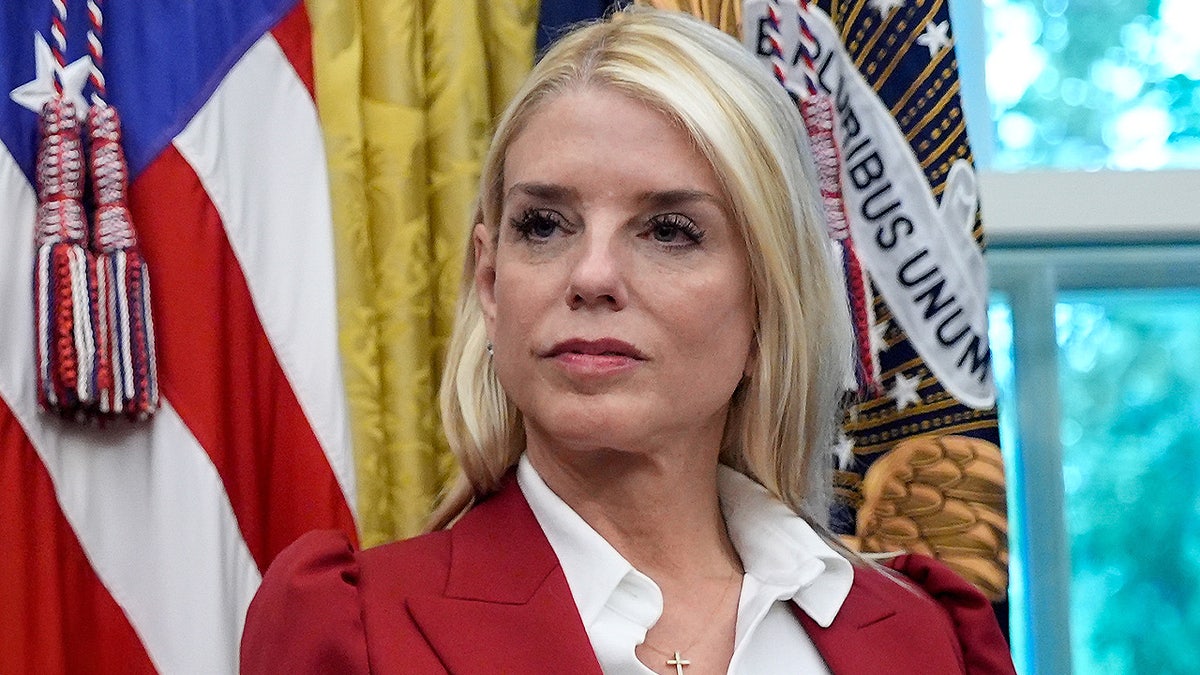
A January executive order directed Attorney General Pam Bondi, here, and Secretary of Homeland Security Kristi Noem to establish such task forces in each state as part of the administration’s efforts to thwart cartels and human trafficking networks operating on U.S. soil. (Yuri Gripas/Abaca/Bloomberg via Getty Images)
Fox News Digital learned that the task forces nationwide became fully operational at the end of August and have yielded thousands of arrests, and the removal of dangerous drugs and illegal firearms from U.S. streets.
BONDI SAYS HUMAN SMUGGLING IS ‘GETTING PEOPLE KILLED’ ACROSS US AS SHE ANNOUNCES CRACKDOWN
More than 3,000 foreign terrorists and cartel members were arrested as part of the task forces’ operations, including members of notoriously dangerous gangs such as the Sinaloa Cartel, MS-13 and Cartel Jalisco Nuevo Genaracion, Fox News Digital learned.
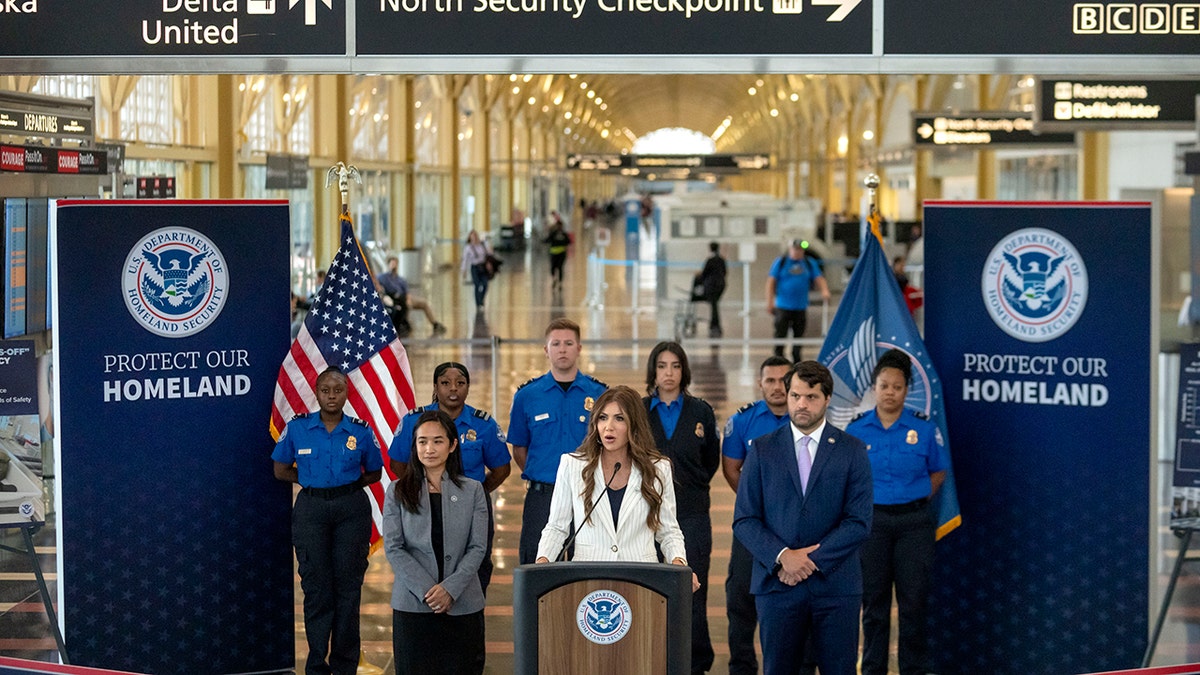
President Donald Trump will host a roundtable at the White House Oct. 23, 2025, with law enforcement and administration officials, like Homeland Security Secretary Kristi Noem. (Mark Schiefelbein/The Associated Press)
The task forces also have recovered two million fentanyl pills and seven tons of other deadly narcotics, seized $3 million in currency and removed more than 1,000 illegal guns from U.S. communities.
Trump campaigned, in part, on removing violent illegal immigrants and crime from U.S. communities, spotlighting the efforts in his address before Congress back in March 2025.
«The territory to the immediate south of our border is now dominated entirely by criminal cartels that murder, rape, torture and exercise total control. They have total control over a whole nation. posing a grave threat to our national security,» Trump said at the time. «The cartels are waging war in America, and it’s time for America to wage war on the cartels.»
The roundtable comes as the U.S. military carries out strikes on suspected drug cartel vessels in the Caribbean and eastern Pacific. The strikes began in September and are part of Trump’s broader effort to dismantle transnational cartels by force.
CLICK HERE TO GET THE FOX NEWS APP
Trump held a similar roundtable at the White House earlier in October, inviting independent journalists who have experienced Antifa’s violence firsthand to speak about their experiences as the administration targets the left-wing group’s protests outside immigration facilities and recently designating it a «domestic terrorist organization.»
donald trump,white house,border security,homeland security,immigration

 DEPORTE21 horas ago
DEPORTE21 horas agoUniversidad de Chile vs. Lanús, por la Copa Sudamericana: día, horario y cómo verlo por TV

 ECONOMIA2 días ago
ECONOMIA2 días agoScott Bessent oficializó el swap con la Argentina y afirmó: “No queremos otro Estado fallido en América Latina”

 CHIMENTOS3 días ago
CHIMENTOS3 días agoLa conductora y el periodista de C5N que festejaron el día de la madre anunciado su embarazo: «Mejor que dos son tres»














